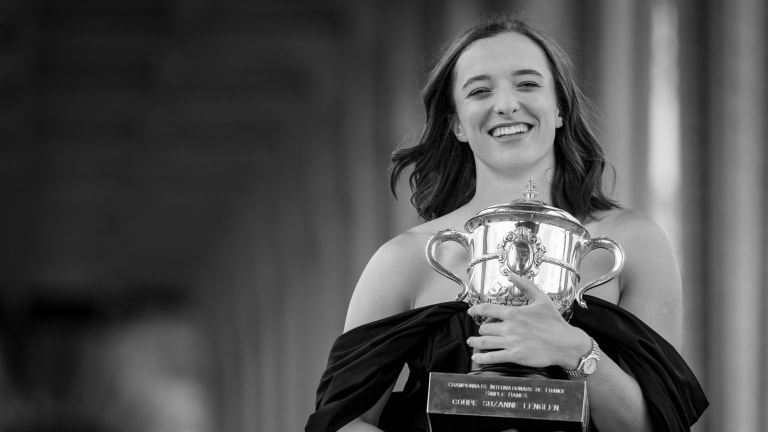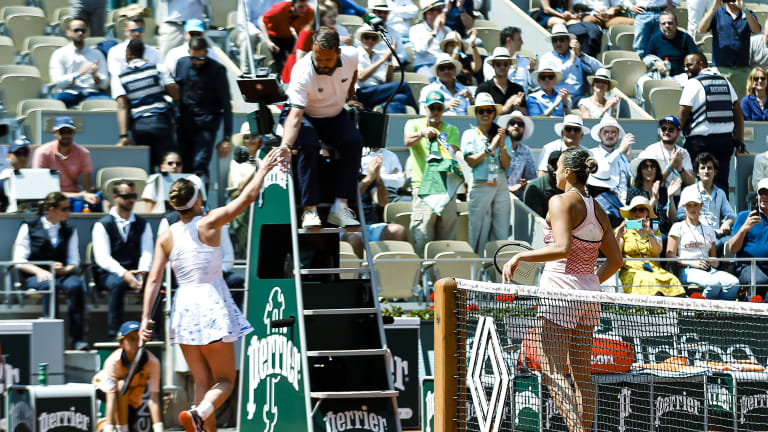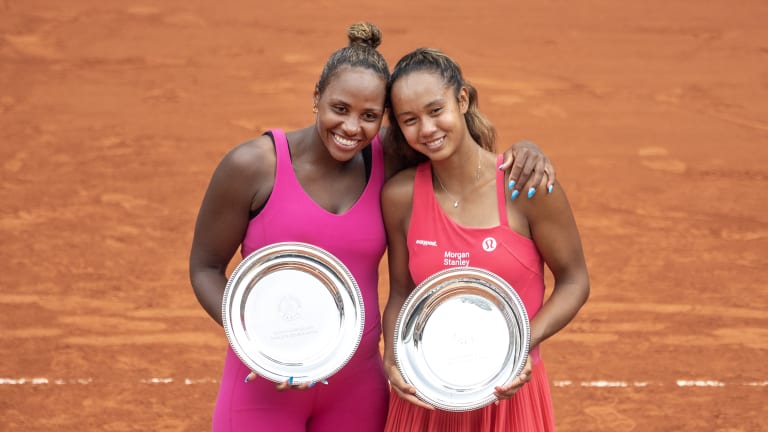A smorgasbord of talent and other stories: Checking in at the midpoint of the WTA season
By Jun 12, 2023Madrid, Spain
Iga Swiatek vs. Madison Keys: Where to Watch, Madrid Preview, Betting Odds
By Apr 29, 2025Madrid, Spain
After enjoying blackout, Iga Swiatek advances over Diana Shnaider in Madrid
By Apr 29, 2025Madrid, Spain
Iga Swiatek vs. Diana Shnaider: Where to Watch, Madrid Preview, Betting Odds
By Apr 28, 2025Pick of the Day
Madrid Open Betting Preview: Diana Shnaider vs. Iga Swiatek
By Apr 28, 2025Ranking Reaction
How Jessica Pegula and Coco Gauff can pass Iga Swiatek for the No. 2 ranking in Madrid
By Apr 25, 2025Lifestyle
Iga Swiatek shares first look at new Lancôme campaign
By Apr 25, 2025Madrid, Spain
Coco Gauff joins Iga Swiatek in rallying to win Madrid opener
By Apr 24, 2025Madrid, Spain
Jelena Ostapenko won't face Iga Swiatek in Madrid after falling to Anastasija Sevastova
By Apr 24, 2025Madrid, Spain
Iga Swiatek escapes Alexandra Eala in Madrid second round
By Apr 24, 2025A smorgasbord of talent and other stories: Checking in at the midpoint of the WTA season
As the women's season hits halftime, Joel Drucker offers his take on the five prevailing themes of 2023 so far.
Published Jun 12, 2023
Advertising
Advertising

For Joel Drucker, Swiatek's win in the Roland Garros final was arguably the finest effort of what’s already a Hall of Fame-career.
© © Andy Cheung / ArcK Images / Getty Images
Advertising
Advertising

The war between Russia (and its ally, Belarus) and Ukraine took center stage in several matches at Roland Garros.
© Getty Images
Advertising

Fernandez and Townsend's run to the doubles final in Paris was a captivating story.
© Corbis via Getty Images